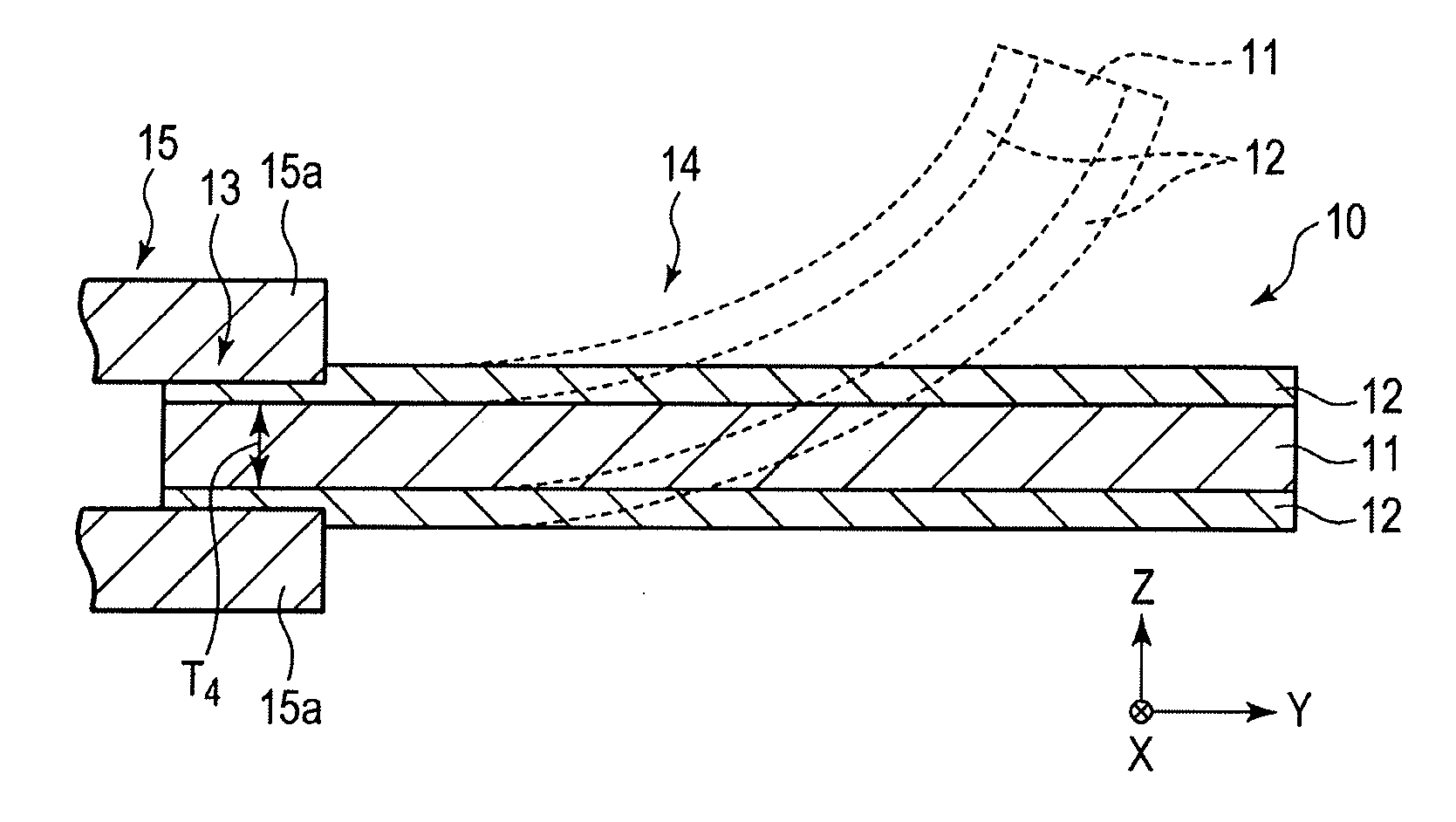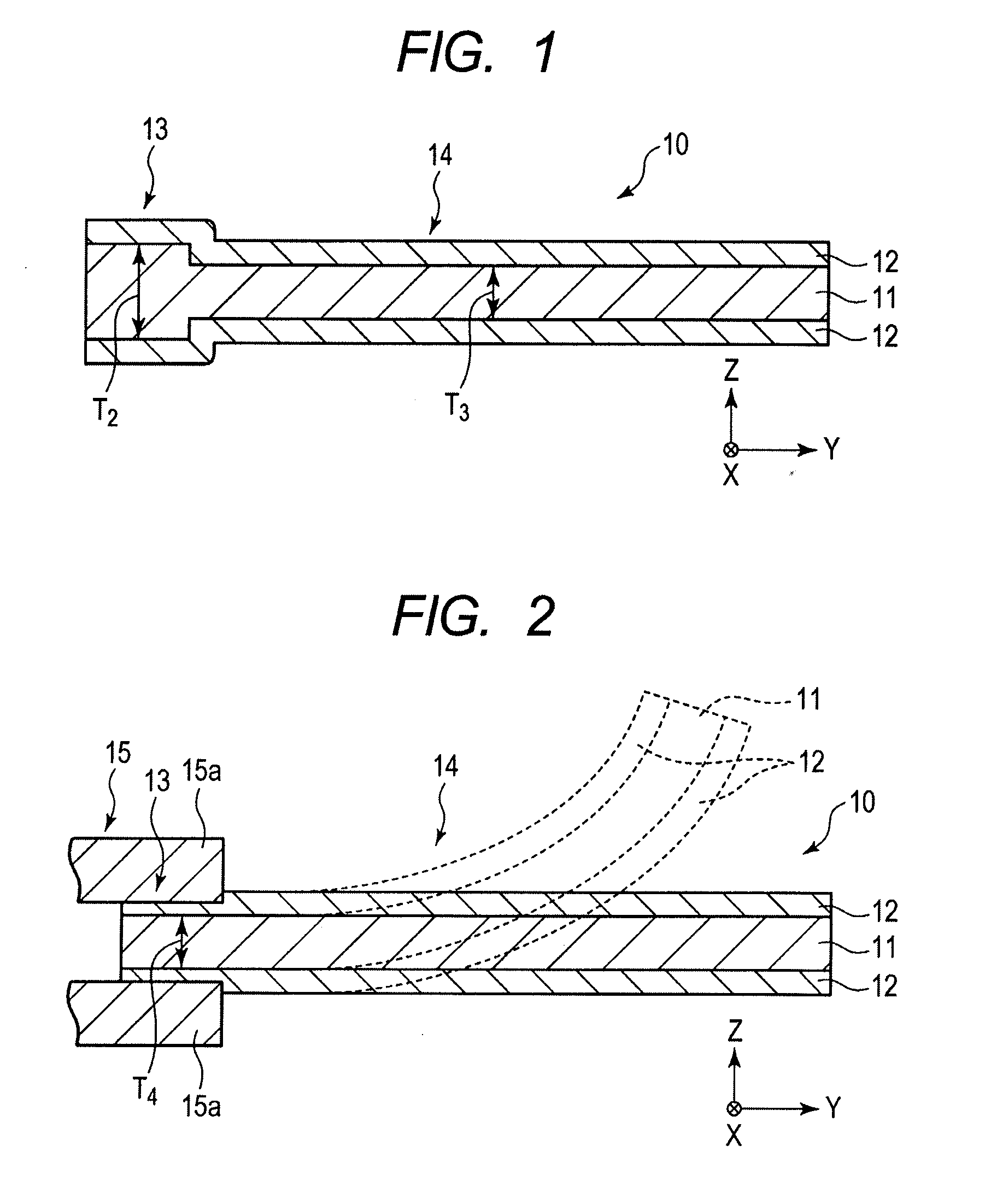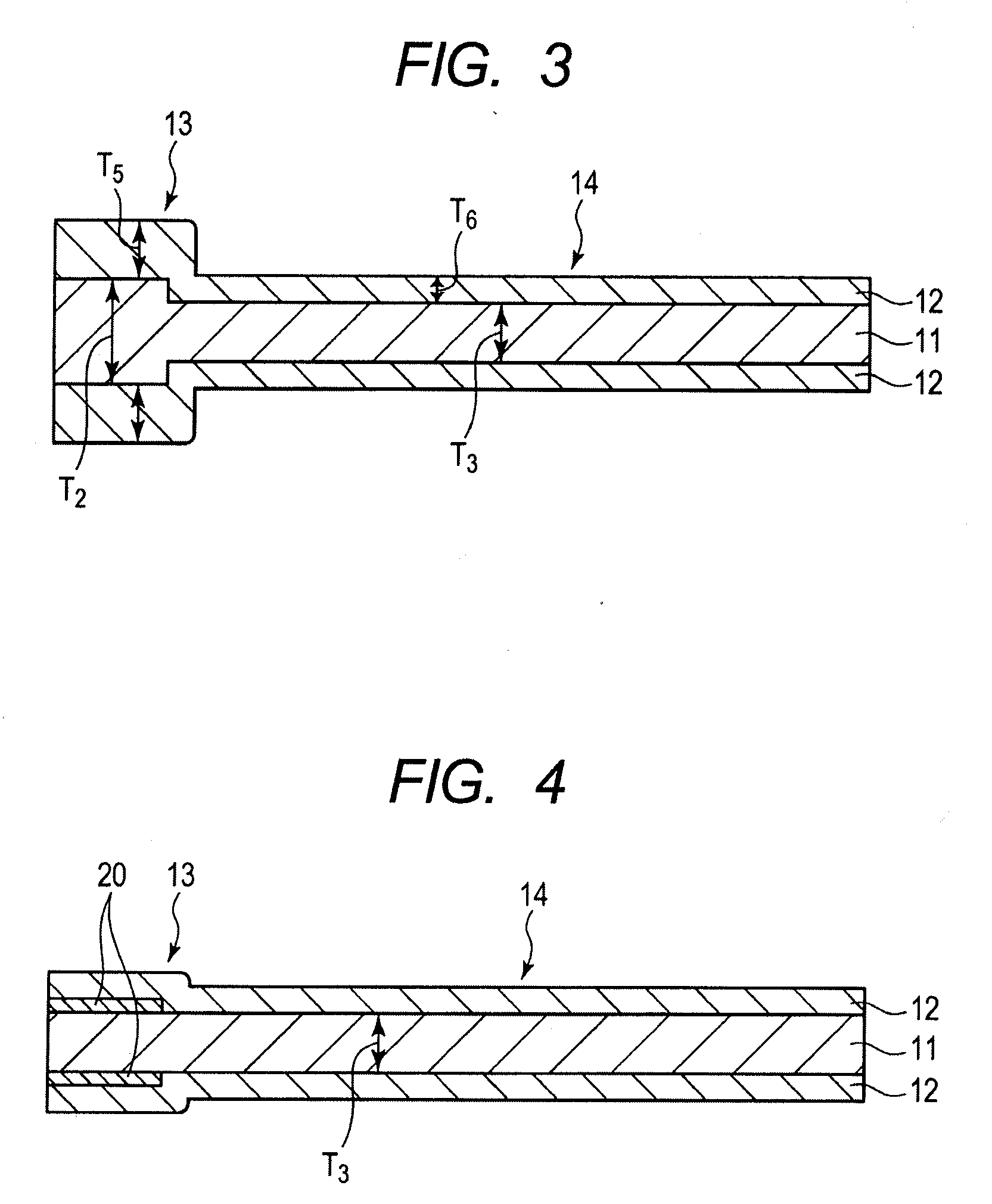Polymer actuator and device equipped with polymer actuator
a polymer actuator and actuator technology, applied in the field of actuators, can solve the problems of increasing power consumption, reducing the displacement amount or the driving force of the displacement, and easy degradation of insulation performance, so as to improve the characteristics of the actuator, facilitate maintenance of wide gaps, and simple configuration
- Summary
- Abstract
- Description
- Claims
- Application Information
AI Technical Summary
Benefits of technology
Problems solved by technology
Method used
Image
Examples
Embodiment Construction
[0023]FIG. 1 is a cross-sectional view of a polymer actuator of the embodiment in the thickness direction thereof. FIG. 2 is a cross-sectional view when a support portion of the polymer actuator shown in FIG. 1 is fixed and supported. FIGS. 3 and 4 are cross-sectional views of the polymer actuator of modified examples of the embodiment.
[0024]A polymer actuator 10 of the embodiment includes: an electrolyte layer 11; and electrodes 12 and 12 which are respectively formed on both surfaces of the electrolyte layer 11 in the thickness direction.
[0025]The electrolyte layer 11 contains, for example, an ion-exchange resin and a polarizable organic solvent with salt or a liquid organic compound as an ion liquid. It is desirable that the ion-exchange resin is a cation-exchange resin. Accordingly, an anion is fixed, and a cation is freely movable. It is desirable to use the cation-exchange resin since the curved displacement amount of the polymer actuator 10 is large. Preferred examples of the...
PUM
 Login to View More
Login to View More Abstract
Description
Claims
Application Information
 Login to View More
Login to View More - R&D
- Intellectual Property
- Life Sciences
- Materials
- Tech Scout
- Unparalleled Data Quality
- Higher Quality Content
- 60% Fewer Hallucinations
Browse by: Latest US Patents, China's latest patents, Technical Efficacy Thesaurus, Application Domain, Technology Topic, Popular Technical Reports.
© 2025 PatSnap. All rights reserved.Legal|Privacy policy|Modern Slavery Act Transparency Statement|Sitemap|About US| Contact US: help@patsnap.com



